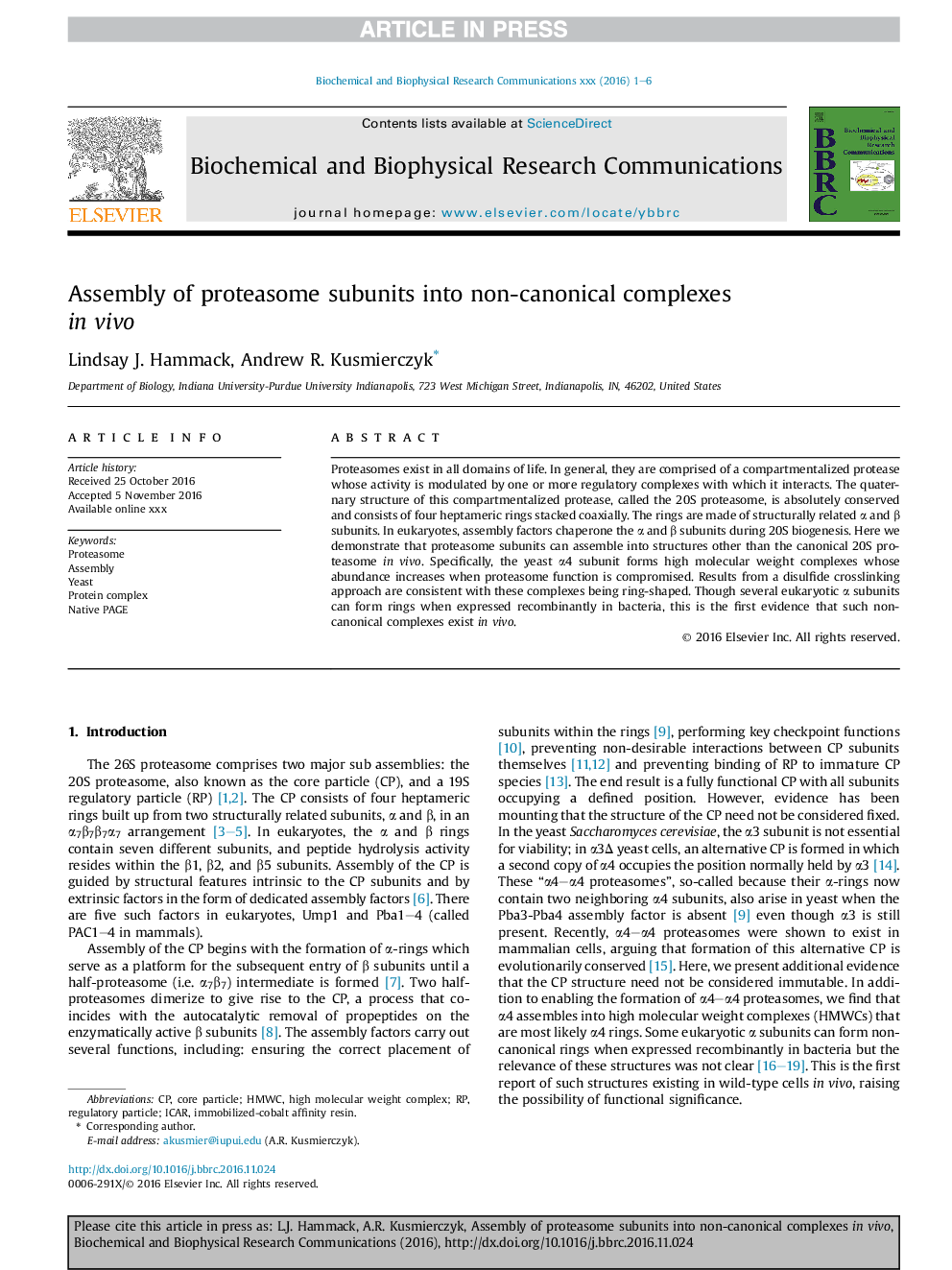| Article ID | Journal | Published Year | Pages | File Type |
|---|---|---|---|---|
| 5505727 | Biochemical and Biophysical Research Communications | 2017 | 6 Pages |
Abstract
Proteasomes exist in all domains of life. In general, they are comprised of a compartmentalized protease whose activity is modulated by one or more regulatory complexes with which it interacts. The quaternary structure of this compartmentalized protease, called the 20S proteasome, is absolutely conserved and consists of four heptameric rings stacked coaxially. The rings are made of structurally related α and β subunits. In eukaryotes, assembly factors chaperone the α and β subunits during 20S biogenesis. Here we demonstrate that proteasome subunits can assemble into structures other than the canonical 20S proteasome in vivo. Specifically, the yeast α4 subunit forms high molecular weight complexes whose abundance increases when proteasome function is compromised. Results from a disulfide crosslinking approach are consistent with these complexes being ring-shaped. Though several eukaryotic α subunits can form rings when expressed recombinantly in bacteria, this is the first evidence that such non-canonical complexes exist in vivo.
Related Topics
Life Sciences
Biochemistry, Genetics and Molecular Biology
Biochemistry
Authors
Lindsay J. Hammack, Andrew R. Kusmierczyk,
